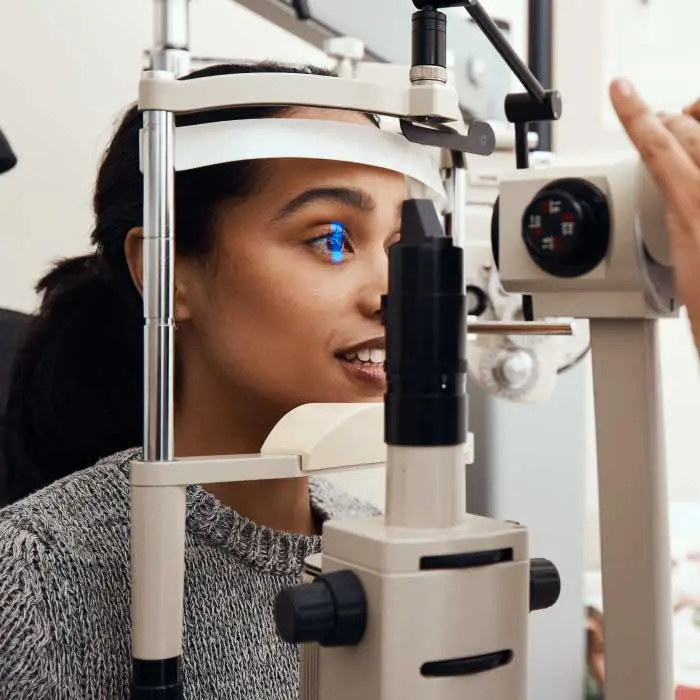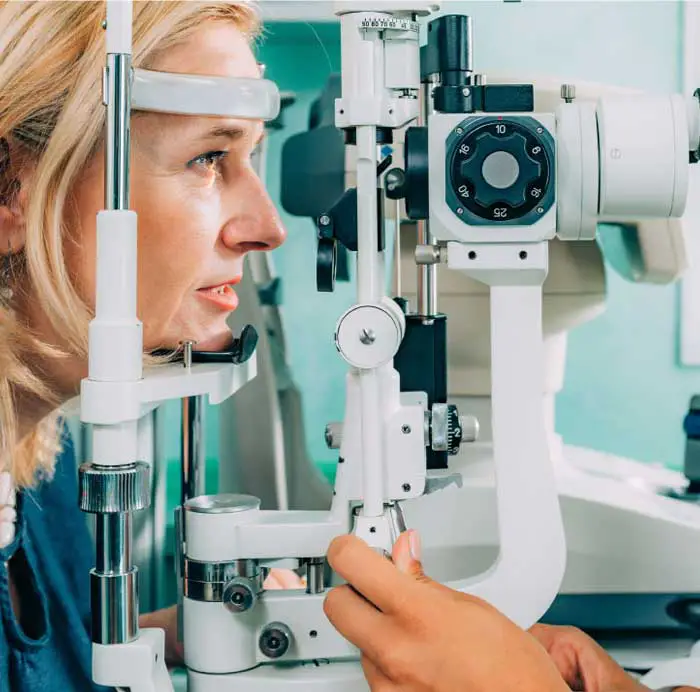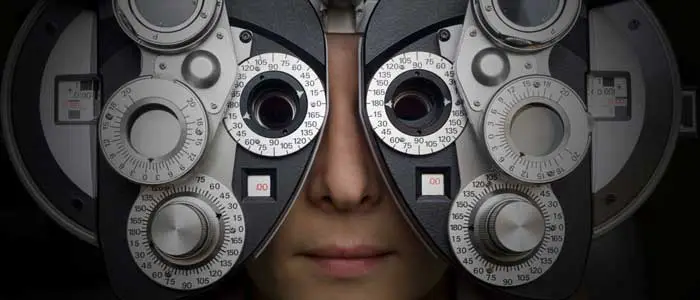Strabismus - Symptoms, Causes and Treatment
07-04-2024
What is Strabismus?
Strabismus, also known as crossed eyes or squint, is a condition characterized by an inability of the eyes to align properly. This misalignment can occur intermittently or constantly, causing one eye to turn inward, outward, upward, or downward in relation to the other eye. Strabismus can affect individuals of all ages, and can impact visual acuity and depth perception. Proper diagnosis and management of strabismus is crucial to prevent further complications and maintain good eye health.What Are The Causes Of Strabismus?
Strabismus is typically caused by a miscommunication between the brain and the eye muscles that control eye movement. This miscommunication can lead to one or both eyes not aligning properly, resulting in the eyes pointing in different directions. This can be due to a variety of factors, including issues with the nerves that control eye movement, genetics, or certain medical conditions that affect the muscles or nerves involved in eye movement. In some cases, trauma or injury to the eye or head can also lead to the development of Strabismus.What Are The Risk Factors For Strabismus?
Risk factors for Strabismus include a family history of the condition, certain medical conditions such as cerebral palsy or Down syndrome, premature birth, and certain eye conditions such as cataracts or retinopathy of prematurity. Additionally, individuals who have uncorrected refractive errors or have experienced trauma to the eye may be at an increased risk for developing Strabismus. It is important for individuals with these risk factors to undergo regular eye exams to monitor their eye health and catch any signs of Strabismus early on.What Are The Symptoms Of Strabismus?
Some common symptoms of Strabismus include misalignment of the eyes, where one eye may turn in, out, up, or down compared to the other eye. This can result in double vision, as the brain receives two different images from each eye. Some individuals may experience eye strain or headaches, particularly when trying to focus on objects at different distances. Additionally, some people with Strabismus may notice that one eye appears to be constantly looking in a different direction than the other.How is Strabismus Diagnosed?
Strabismus is typically diagnosed during a comprehensive eye examination by an optometrist. In order to diagnose strabismus, the optometrist will perform a series of tests to assess the alignment of the eyes, including the cover test and the alternate cover test. These tests involve covering and uncovering each eye to observe any deviations in alignment. Additionally, the optometrist may use a special instrument called a phoropter to measure the degree of misalignment. A thorough evaluation of the patient's visual acuity, eye movements, and binocular vision will also be conducted to determine the presence of strabismus.How is Strabismus Treated?
Strabismus can be treated through various methods depending on the severity of the condition. One common treatment option is the use of prescription eyeglasses or contact lenses to help correct the misalignment of the eyes. Vision therapy, which includes exercises and activities to improve eye coordination and focusing abilities, can also be an effective treatment for Strabismus. In some cases, patching one eye or using eye drops to temporarily blur the vision in the stronger eye may be recommended to help strengthen the weaker eye. Surgery may be necessary for more severe cases of Strabismus, where the eye muscles are adjusted to better align the eyes. Overall, the treatment approach for Strabismus will vary depending on the individual's age, the severity of the condition, and other factors, so it is important to consult with an eye care professional to determine the most appropriate treatment plan.Is There A Cure For Strabismus?
As an optometrist, I can confirm that there is no one-size-fits-all cure for Strabismus. However, there are various treatment options available that can help manage the condition and improve eye alignment. These treatments may include vision therapy, specialized glasses, prism lenses, patching, and in some cases, surgery. The best course of action will depend on the individual and the severity of their Strabismus. It is important for those affected by Strabismus to consult with an eye care professional to discuss their options and develop a personalized treatment plan.How Can Strabismus Be Prevented?
Strabismus cannot be prevented, as it is typically a result of underlying anatomical or neurological issues. However, early detection and treatment of any vision problems in children can help reduce the risk of developing strabismus later on. It is important for parents to monitor their child's eye health and bring them in for regular eye exams to catch any potential issues early. Additionally, ensuring that children are using their eyes properly and not straining them with excessive screen time or poor reading habits can also help promote healthy eye development and potentially reduce the risk of strabismus.Regular eye exams with advanced technologies are essential for the early detection and treatment of strabismus. Schedule an eye exam with an optometrist today!
Schedule An Appointment
Adult Eye Exams
Our advanced eye exams consist of 25+ modern tests and digital scans to assess eye health, function, and visual acuity.

Child Eye Exams
Give your child a clear future with an annual eye exam from our experienced Edmonton optometrists.

Senior Eye Exams
Maintain your vision through your golden years with gold standard eye care from the optometrists at our Edmonton eye clinic.

Contact Lens Eye Exams
Our eye exams for contact lens wearers include test and digital scans to assess eye health, function, visual acuity, and lens fit.

Diabetic Eye Exams
Managing diabetes requires regular eye exams to ensure that diabetes is not causing irreversible vision loss.

Dilated Eye Exams
Dilating the eyes enables our Edmonton optometrists to see more of the eye so that you many never see less.
Our Edmonton Eye Exams Are Comprised Of 4 Phases Of Evaluation

1. Eye Exam Pre-Testing
Corneal Thickness | Intraocular Pressures | Visual Field
Pre-testing is a detailed process that gathers all necessary information for the optometrist in advance of the optometrist-administered eye examination. This process involves completing a detailed patient history, as well as a series of standard tests. Pre-testing is an essential part of the comprehensive eye exam process, providing valuable information and visuals for both the optometrist and the patient.
More About Pre-Testing »
2. Advanced Diagnostic Testing
Retinal Photography, OCT, Topography
eye-deology Vision Care differentiates itself from other clinics by having the most advanced modern diagnostic specialty testing equipment. Specialty equipment, such as a wide-angle high-resolution retinal imager, Optical Coherence Tomography (OCT), Humphrey Visual Field Analyzer and corneal topographer, ensures that patients receive the best comprehensive eye care.
More About Advanced Testing »
3. Optometrist Examination
Health Assessment & Disease Diagnosis
eye-deology Vision Care Edmonton optometrists perform a multitude of tests and assessments to evaluate ocular health, eye coordination, and visual acuity. In addition, they also evaluate the results of the tests and scans performed during pre-testing. As part of patient education, our optometrists also take the time to show and explain results to patients.
More About Doctor Exam »
4. Eye Glass Consult
Prescription | Lens Selection | Digital Fitting
If you require corrective lenses to improve your vision, our licensed opticians will customize their fit to your unique attributes, needs, lifestyle, and budget. Our opticians are happy to provide you with information about the latest eyeglass frame and lens technologies available so you can make informed decisions and begin seeing and looking your best.
More About Eyewear Consult »